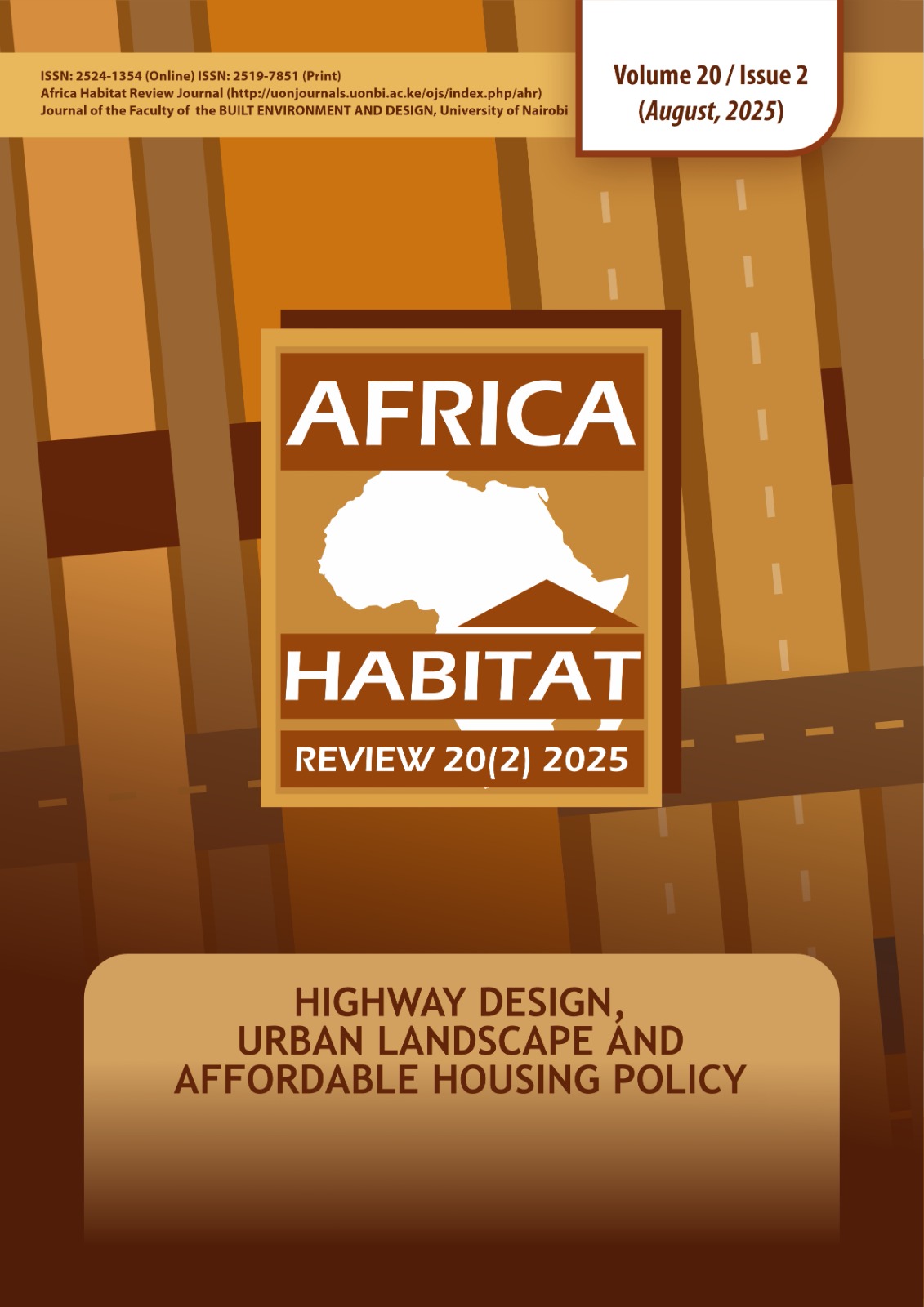Characterisation of Vibrations of a Precast Reinforced Concrete Bridge:
The Case of Kangundo Road Bridge on Outering Road, Nairobi, Kenya
Abstract
The Kangundo Road bridge in Nairobi, Kenya, shows permanent mid-span deflections that may alter its dynamic behaviour and affect user comfort. This study assessed bridge vibrations using ADXL355 and MPU9250 accelerometers, collecting acceleration data at five soffit-mounted points. Acceleration, the most perceptible vibration parameter to humans, was analysed and compared to International Standards Organisation (ISO) 2631, Wright & Walker (1972), and American Institute of Steel Construction (AISC) Design Guide 11 comfort limits. T-test results showed that the measured peak accelerations significantly exceeded the ISO and Wright & Walker thresholds by up to 110%, while the AISC limits were only marginally surpassed. Heavy goods vehicles (HGVs) caused uncomfortable vibrations, while small vehicles remained within acceptable limits. Permanent deflections increase dynamic amplification, increase tensile stress and may cause fatigue damage. The study supports the use of stricter vibration limits in urban areas and confirms the effectiveness of low-cost sensors in monitoring bridge performance and vibration-related serviceability.


